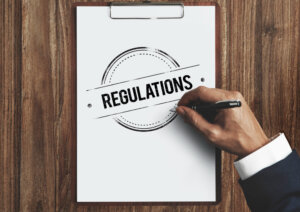To the point, this is a post on what most people call “teamwork.” Bored already?

Believe me, I understand. Traditional talk on teamwork is overdone and underused. But the fact remains that most market evolutions rely on a team—somewhere, somehow, some way. And that’s why what happens inside teams, from a Presidential White House Cabinet to the Board of Directors at GE to your team, might be one of the most important topics we could talk about.
But it’s not enough to throw smart people in a room, call them a team and challenge them with a Mt. Everest-size goal. Thousands of ideas and strategies this year will either change the business world (at least your part of it), or be pushed to an early grave, by the way a team works. But teamwork isn’t working so well at the moment.
Among 477 teams representing nearly 7,000 people in a G5 Leadership Team Dynamics Survey, the average “grade” teams give themselves on team dynamics is a “B-,” or 80.3. That’s a fraction away from good, but a long way from great.
In an effort to raise performance, there’s a lot of focus on talent and engagement—and for good reason. Companies who score high in employee engagement improve their operating income by 19% and almost 28% improvement in earnings per share when compared to organizations with lower engagement scores.
In another G5 Leadership survey, when asked how engaged people on their teams were, 70% said people were engaged or very engaged. So with that level of engagement you would expect more great performance, right? Not necessarily, because “engagement” isn’t the only way to better numbers—and engagement doesn’t equal great performance.
When asked how often individual agendas get in the way of making progress as a team, 55% of those same people said daily or weekly. It’s not that we can’t get people on teams engaged, but it’s the way teams engage that undermines dynamics.
There are 5 Levels of Team Dynamics that impact talent and guide individual ambition:
| Level | Team Focus | % of Team Cultures* |
| 5 | We-Then-Me (Interdependent)
Organizations and teams at Level 5 think company first, team second, and me third. Ambition is driven by “what can we do uniquely to have an impact in the market,” not “what can we do better than Company X?” |
2% |
| 4 | Us-vs.-Them (Interdependent)
Organizations at Level 4 get pre-occupied attempting to best outside competitors. Teams at Level 4 work together effectively but get distracted by internal competition with other teams, i.e., Marketing vs. Sales, Products. vs. Services, East Region vs. West Region. As a result of their “enemy-centered” approach, organizations at Level 4 aren’t as collaborative with other teams as they could be, and as a result get value-added product replication or slight modification rather than original innovation. |
22% |
| 3 | Me-Then-We (Independent)
The focus of Level 3 teams is characterized by individual recognition and team member vs. team member competition. Diversity may be present, but is usually undervalued and poorly utilized because individual, me-first focus preempts collaboration and diversity. Debates and discussions are frequently competitive and occasionally combative. Success is moderate, inconsistent and difficult to sustain. |
49% |
| 2 | Me-Centered (Isolated and Indifferent)
Level 2 teams don’t care and are change-resistant. People and teams at Level 2 are “job-holders;” people who just “do their jobs,” and nothing more. |
25% |
| 1 | Me-Centered (Isolated and Corrosive)
Level 1 teams (and we use the word “team” loosely) subversively undermine change, and don’t like each other, much less other teams or the organization for whom they work. |
2% |
* Percentages come from the work of Logan, King and Fischer-Wright at USC.
The bottom two levels almost never change because they don’t care enough to try. The market, when it has a vote, always votes them “out of office.” Organizations at Levels 1 and 2 are dead men walking. Levels 3 and 4 can and do change, if shown a more effective way to work and want to either accelerate the positive direction they’re headed, or put the brakes on the downward spiral they sense is inevitably coming.
Moving to Level 5
Teams most interested in change generally fall into two categories: already great or dying. It’s the one’s who are “good enough” who rarely make a move, and opt for status-quo. But wherever we are, if we want to change now is the time. The point of departure for change is irrelevant. It’s the departure itself that matters.
——————
For more resources, see our Library topic Team Building.
——————
Guest blog written by Steven Smith from leadership training company G5 Leadership
 Sections of this topic
Sections of this topic
















